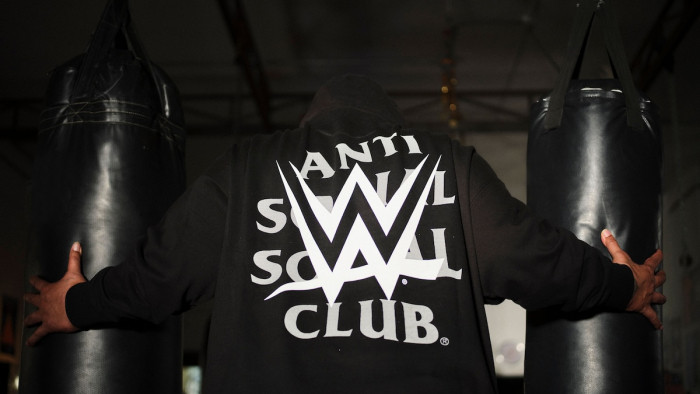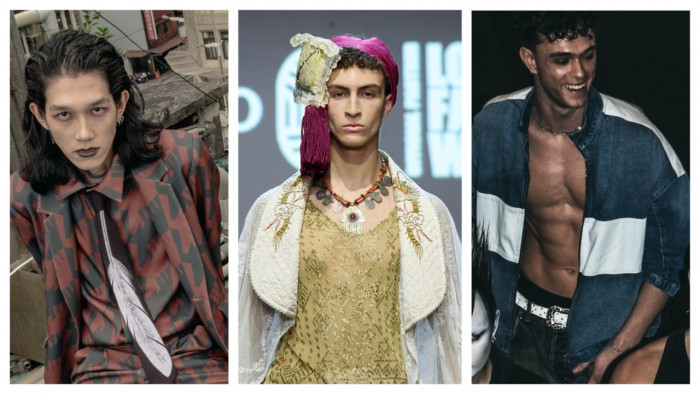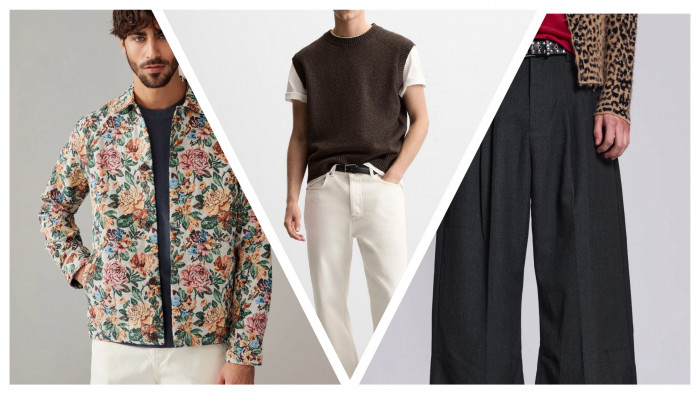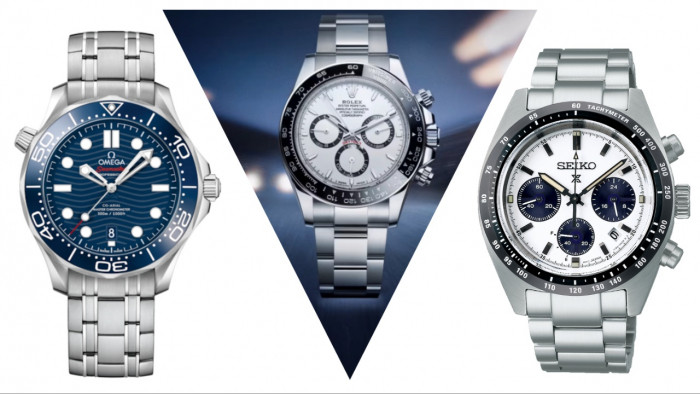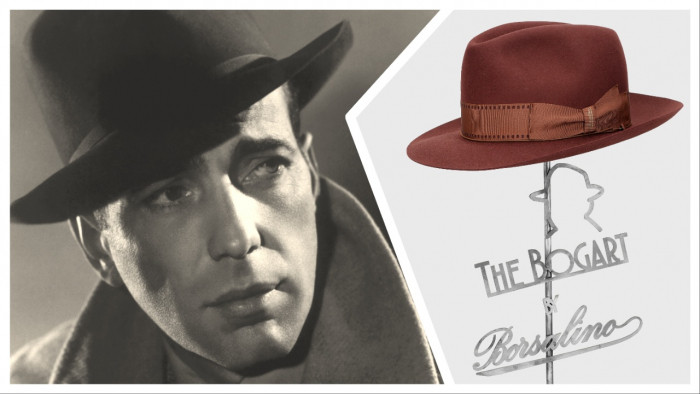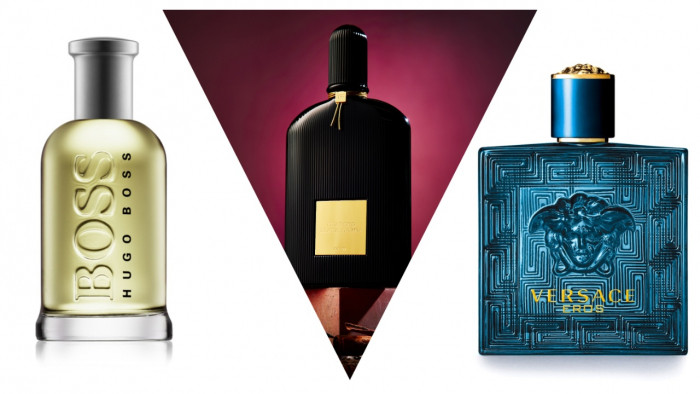Bianca Saunders
Men have changed – it’s time our clothes did too, says the creator of the eponymous label
“My brand is a conversation on black masculinity. It’s based on my surroundings and my identity, so I use my friends as inspiration. I know someone who, in the day, wears oversized shirts and a du-rag, but will go out at night in a tight, knitted top. My clothes represent that movement: masculine, but with elements of femininity. They’re about the mannerisms of masculinity and the characters that sit on its borders. Clothing so often has to be one thing – streetwear or workwear or tailoring – but I want mine to be a combination to reflect the people around me.”
1. Kemar trousers
“I kept to a muted colour palette, but the stiffer, shinier fabric twists something that seems quite normal. Wearing leather is sexy, but depending on how it’s worn, it can be quite camp. It’s something masculine, but using a fabric that has a connotation of being overtly feminine.”

2. Vinyl slacks
“For this collection I was fascinated by how masculinity is portrayed on social media, which can be quite superficial. That’s where the shiny fabrics came from: superficiality. The trousers have zips so you can adjust them: pull them in or wear them wider.”

3. Movement jumper
“My favourite thing is garments that are changeable, because you don’t want to be wearing the same thing all the time, you want to make pieces different for various outfits. This jumper has an adjustable strap that changes the shape and creates ripples in the fabric that I really like.”

Bianca’s Britspiration
Phoebe Philo
“When Phoebe went to Céline she brought a change, a more relaxed idea of how women could dress, but with precise cuts and androgyny. Creating clothes that are minimalistic but still very striking is a real skill for a designer, because you can overdo things with cuts, shapes and colour choices. What’s really interesting to me is how, when she was at Céline, people wondered so much about what her menswear would look like. Men loved what she did for womenswear so much that you would have someone like Kanye West wear a shirt from a women’s collection. It was that iconic.”
Oliver Taylor
“When people hear that CV22 is inspired by rugby, they think it’s a sportswear brand, which it isn’t. It’s influenced by the game’s juxtaposition of propriety, order and formality, but also its cheeky rebellion and physicality. There’s a code that rugby players live by, the DNA of the sport, and that’s also the DNA of the brand. We’re not specifically for rugby-sized guys and, though we’re inspired by the game’s history, we know that it’s 2018, not 1845. So we embrace details such as bias cutting, which make it feel modern. It’s softer, tailored, with a voice of its own.”

Oliver’s Britspiration
Tommy Nutter
“I love what he did in Savile Row. He took somewhere that couldn’t get more starchy and ordered and flipped it on its head. He was criticised and ostracised but he just did it, and I love that belligerence. He didn’t do it for the hell of it, but because he thought it needed to be done. It was beautiful; not just attitude but aptitude.”
Omar Afridi
The brains behind utilitarian, London-based label Leon Bara shares his inspo
“I’m an outsider. My origin is in the Pukhtun tribal areas in Afghanistan, but I’m also immersed in Japanese culture, so I try to mix the Afghani ethnic and the Japanese with classic British style to make it feel more modern. I started my label because I got frustrated with looking for things that didn’t exist, or seeing the way that brands were charging more even as their quality went down. So I thought, I’ll do it myself. Design should offer function and utility, and that starts with fabrics, so I look for things that are sweatproof, odour-resistant or crushproof.”
1. Spy coat
“It’s a combination of a classic motorbike jacket and an overcoat. It’s made from waterproof Loden fabric, from Munich. It takes inspiration from Japan for the oversized sleeves, which are like a kimono. There’s a strap inside so if you get hot, you can take it off without having to hold it.”

2. Ultimate parka
“It was inspired by the capes worn by marchers on the Jarrow Crusade and how they tied them around their bodies. It’s a waterproof, oversized parka that packs into a body bag – with a pocket on the front for your keys, phone and wallet – for when it’s dry.”

3. Tote vest
“It’s modernising the fisherman jacket, which already has a lot of utility. One side is open, so instead of pulling it over your head, you slide in. It’s the perfect autumn layer when you need a bit more heat. It also turns into a bag; there are so many vests [out there], but that makes it unique.”

Omar’s Britspiration
Norman Foster
“If I wasn’t a designer I would have loved to have been an architect. Architecture inspires me so much. You look at Norman Foster’s courtyard roof at the British Museum and wonder, ‘How the hell did he do it?’ It seems to move and become something else, as though your eyes are sliding up and down. I think that way about the structure of clothes. I want people to see what I make and think, ‘How did he do it?’”
Jordan Bowen & Luca Marchetto
The JORDANLUCA design duo on meshing traditional Italian influences with Brit-inspired street-style
Jordan: “We’ve been around for a while: Luca worked for brands such as Vivienne Westwood, and I made hats for Stephen Jones. We’ve done everything from consulting to sewing in labels, so organisation and putting things together is really important to us. But the most unique thing about the brand is how we work together. It’s a fusion of where we’re both from: Luca from northern Italy, me from Battersea. It’s an alchemistic approach that creates something unexpected and spontaneous. ‘New’ isn’t about making a coat with three arms; it’s about approaching the things you love in new ways.”
1. Tracksuit suit
Jordan: “We wanted to develop something that represented London and Italy in one piece. The front is highly engineered tailoring, sectioned-off with reflective fabric and made from a stretch wool. But the back is nylon. We think of it as council-flat heritage. It’s fun to play with the two.”

2. Combat trackies
Jordan: “We developed a yarn made of fibreglass, with a reflective, snowflake print. In the daylight it’s combat green, but when you flash [light at] it, it goes white. Fabric always comes first: the fabric tells me what it wants to become. You can’t force fabric to become something it’s not.”

3. Puffa jacket
Luca: “I went to Sainsbury’s on a freezing day in a big puffa coat, but because I had a bag full of stuff I couldn’t take it off. It was so hot. So we went back to the studio and came up with the idea of something that you could leave on, but open up. It’s about clothes that function.”

(Images: Antonello Trio/Ed Little)


